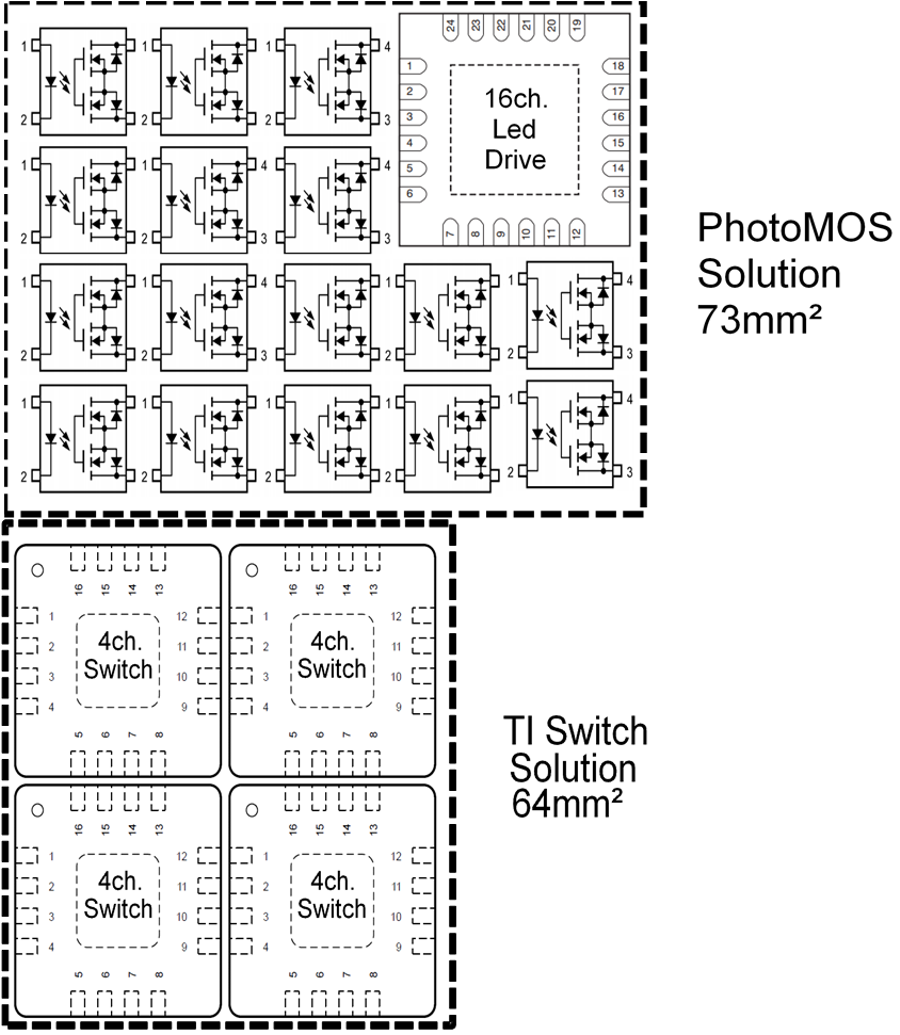SCDA036 May 2022 TMUX8212
1 Size Requirment
One of the largest benefits to an integrated multiplexer switching solution is size. For example, a conventional mechanical relay solution. In a 16-channel system, 16 SPST (1:1, 1 channel) relays would be needed, accounting for >450mm2 board area. This is before including any relay driver ICs. Compare this to a Photorelay solution and the user can see that the size requirements reduce dramatically. But Photorelays can not be driven directly through GPIO and need an LED driver to control the state of each switch. This adds to the solution size and increases the system complexity, as well as power requirements. TI’s Multiplexer solution such as the TMUX821x do not require any additional ICs. Each individual switch can be controlled by standard digital pins with 1.8V Logic. As a result, TI’s switch solution is even smaller than a comparable Photorelay solution.
 Figure 1-1 16 Channel, 50V Solution
Size Comparison (not drawn to scale)
Figure 1-1 16 Channel, 50V Solution
Size Comparison (not drawn to scale)